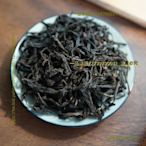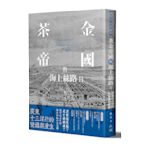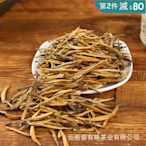搜尋結果
 $11539小罐茶金罐特級白毫銀針白茶茶葉禮盒80g楓林茶業
$11539小罐茶金罐特級白毫銀針白茶茶葉禮盒80g楓林茶業 $1005一品茶莊 【森林清香】80g花果香2022桐木關正山小種野茶金牡丹荒野老樹一品茶莊
$1005一品茶莊 【森林清香】80g花果香2022桐木關正山小種野茶金牡丹荒野老樹一品茶莊 $8500012mm濃金茶金南洋金珠大證珠【高貨】古幣專賣
$8500012mm濃金茶金南洋金珠大證珠【高貨】古幣專賣 $1129云南普洱茶熟茶金芽貢餅357g 勐海2016年古茶樹純料昆明倉熟茶餅楓林茶業
$1129云南普洱茶熟茶金芽貢餅357g 勐海2016年古茶樹純料昆明倉熟茶餅楓林茶業![天然茶金漸變冰透起剛正圈瑪瑙手鐲 天然茶金漸變冰透起剛正圈瑪瑙手鐲]() $2184天然茶金漸變冰透起剛正圈瑪瑙手鐲古幣專賣
$2184天然茶金漸變冰透起剛正圈瑪瑙手鐲古幣專賣![茶寶潤覺茶 金萃植潤茶籽潔顏慕斯(200ml)【小三美日】 茶寶潤覺茶 金萃植潤茶籽潔顏慕斯(200ml)【小三美日】]() $280茶寶潤覺茶 金萃植潤茶籽潔顏慕斯(200ml)【小三美日】小三美日旗艦店
$280茶寶潤覺茶 金萃植潤茶籽潔顏慕斯(200ml)【小三美日】小三美日旗艦店![茶金帝國與海上絲路(Ⅱ)廣東十三洋行的變遷與重生 茶金帝國與海上絲路(Ⅱ)廣東十三洋行的變遷與重生]() $315茶金帝國與海上絲路(Ⅱ)廣東十三洋行的變遷與重生墊腳石商城
$315茶金帝國與海上絲路(Ⅱ)廣東十三洋行的變遷與重生墊腳石商城![蜜香金芽滇紅茶春茶雲南鳳慶滇紅茶金芽茶250克半斤工夫茶南秋號 蜜香金芽滇紅茶春茶雲南鳳慶滇紅茶金芽茶250克半斤工夫茶南秋號]() $840蜜香金芽滇紅茶春茶雲南鳳慶滇紅茶金芽茶250克半斤工夫茶南秋號雲南特產普洱茶
$840蜜香金芽滇紅茶春茶雲南鳳慶滇紅茶金芽茶250克半斤工夫茶南秋號雲南特產普洱茶![【熱賣下殺價】云南滇紅茶金芽螺特級散裝2022年新茶鳳慶紅茶金絲蜜濃香茶葉 【熱賣下殺價】云南滇紅茶金芽螺特級散裝2022年新茶鳳慶紅茶金絲蜜濃香茶葉]() $1305【熱賣下殺價】云南滇紅茶金芽螺特級散裝2022年新茶鳳慶紅茶金絲蜜濃香茶葉Y8082323673
$1305【熱賣下殺價】云南滇紅茶金芽螺特級散裝2022年新茶鳳慶紅茶金絲蜜濃香茶葉Y8082323673![200克品嘗包雲南滇紅茶2020年 蜜香大金針(2號) 鳳慶滇紅茶金芽 200克品嘗包雲南滇紅茶2020年 蜜香大金針(2號) 鳳慶滇紅茶金芽]() $819200克品嘗包雲南滇紅茶2020年 蜜香大金針(2號) 鳳慶滇紅茶金芽雲南茶業
$819200克品嘗包雲南滇紅茶2020年 蜜香大金針(2號) 鳳慶滇紅茶金芽雲南茶業![茶金 作者黃國華 全新 茶金 作者黃國華 全新]() $400茶金 作者黃國華 全新歡喜舖
$400茶金 作者黃國華 全新歡喜舖![云南陳年普洱熟茶 糯伍2006年古樹茶金芽357g餅茶 舊巷古茶 云南陳年普洱熟茶 糯伍2006年古樹茶金芽357g餅茶 舊巷古茶]() $2494云南陳年普洱熟茶 糯伍2006年古樹茶金芽357g餅茶 舊巷古茶楓林茶業
$2494云南陳年普洱熟茶 糯伍2006年古樹茶金芽357g餅茶 舊巷古茶楓林茶業
Jinjunmei (金駿眉) is a celebrated black tea from the Wuyi Mountains in Fujian Province, China. It is made exclusively from the buds plucked in early spring from the tea plant. The buds are subsequently fully oxidized and then roasted to yield a tea that has a sweet, fruity and flowery flavour with a long-lasting sweet after-taste. [1] .
Jin Xuan (Chinese: 金 萱; pinyin: jīn xuān; lit. 'Golden Daylily'; pronounced [tɕi n.ɕɥɛ n]) is a variety of oolong tea developed in 1980. The tea is also known as #12 or as "Milk Oolong" (Nai Xiang). It originates from Taiwan. The taste is light, creamy, and flowery and
- Varieties and Names
- Blends
- Manufacture
- Tea Grading
- Brewing
- Research
- See Also
Generally, unblended black teas are named after the region in which they are produced. Often, different regions are known for producing teas with characteristic flavours.
Many finished black teas consist of blends of various varieties of black tea. In addition, black tea is often blended with various other plants or flavourings in order to obtain a beverage.
After the harvest, the leaves are first witheredby blowing air on them.Then black teas are processed in either of two ways, CTC (crush, tear, curl) or orthodox. The CTC method produces leaves of fannings or dust grades that are commonly used in tea bags but also produ...Next, the leaves are oxidized under controlled temperature and humidity. (This process is also called "fermentation", which is a misnomer since no actual fermentation takes place. Polyphenol oxidas...Then the leaves are driedto arrest the oxidation process.Black tea is usually graded on one of four scales of quality. Whole-leaf teas are the highest quality, with the best whole-leaf teas graded as "orange pekoe". After the whole-leaf teas, the scale degrades to broken leaves, fannings, then dusts. Whole-leaf teas are produced with little or no alteration to the tea leaf. This results in a finished pro...
Generally, one uses 0.08 ounces (2.26 g) of tea per 8 US fl oz (237 ml) of water. Unlike green teas, which turn bitter when brewed at higher temperatures, black tea should be steeped in water brought up to 212 °F (100 °C) for 3–5min. Whole-leaf black teas, and black teas to be served with milk or lemon, should be steeped four to five minutes.The mo...
Plain black tea without sweeteners or additives contains 50 mg of caffeine per 250 mL cup, but negligible quantities of calories or nutrients. Black teas from Camellia sinensis contain polyphenols, such as flavonoids, which are under preliminary research for their potential to affect blood pressure and blood lipids as risk factors for cardiovascula...
The Classic of Tea or Tea Classic (simplified Chinese: 茶 经; traditional Chinese: 茶 經; pinyin: chájīng) is the first known monograph on tea in the world, by Chinese writer Lu Yu between 760 CE and 762 CE, during the Tang dynasty.
Jin Fo tea ( Chinese: 金 佛 茶; pinyin: jīn fó chá; lit. 'Gold Buddha tea'; pronounced [tɕín fwǒ ʈʂʰǎ]) is a Wuyi Oolong tea, developed at the Wuyi Shan Tea Researching Center located in Fujian Province, China. It is a medium Wuyi Oolong showing both creaminess and a floral aftertaste.
Four varieties of green tea prior to brewing The colour of green tea brewed for 3 minutes at 90 C (194 F) Steeping, or brewing, is the process of making tea from leaves and hot water, generally using 2 grams (0.071 oz) of tea per 100 millilitres (3.5 imp fl oz; 3.4 US fl oz) of water or about 1 teaspoon of green tea per 150 millilitres (5.3 imp fl oz; 5.1 US fl oz) cup.
Pu'er tea processing, although straightforward, is complicated by the fact that the tea itself falls into two distinct categories: the "raw" shēngchá and the "ripe" shóuchá.All types of pu'er tea are created from máochá (毛 茶), a mostly unoxidized green tea processed from Camellia sinensis var. assamica, which is the large leaf type of Chinese tea found in the mountains of southern ...








